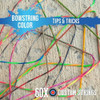How Bow Deer Decoys Help During Hunting
Jul 28th 2021
Some hunters have very strong opinions on using a deer decoy. Love it or hate it, there are definite ways a decoy can help you not only prepare for hunting season but also make it work for you during the season. Read our definitive guide to find out, including common mistakes hunters make.
Prepping for Hunting Season
Most decoys are just like (if not exactly the same as) 3D archery targets. This means you can log a lot of time honing your perfect shot using a decoy. If you’re at all rusty or uncertain about your accuracy, it’s time to break out your bow, deer decoy, and practice, practice, practice.
Even if you’re 100% confident that you don’t need the prep, do it anyway. It gives you an ideal moment to check your equipment to ensure nothing is broken or worn down. You don’t want to be in the field with the perfect shot lined up, only to realize your sight is off or your limb is bent.
During Hunting Season
Are decoys always necessary?
Truthfully, using a deer decoy isn’t always necessary. If your terrain lends itself well to a deer passing within range, using a bow and deer decoy can add an unnecessary element of uncertainty. For example, field-edge setups, scrapes, tight funnels, and water sources likely won’t need a decoy.
Large fields with multiple entrance points or open timber are better places to put a decoy. Getting the deer an extra 100 or even 50 yards closer to you can mean the difference between a successful hunt and a miss. Combine it with a hunting blind, and your odds will definitely improve.
What styles of decoys are there?
There are two main styles: 3D and 2D. 3D decoys are best for when you’re passively hunting from a ground blind or treestand. They tend to be rather bulky and work well if you’re able to leave them covered in the forest with brush. (This also helps them smell more natural.) Practicing with your bow with a 2D deer decoy is lightweight and great for still-hunting or stalking.
How do I place my decoy?
Aim for placement within 10 yards of your shot. Why? Because bucks have a distinct ritual when they see another buck, even a fake one.
The majority of bucks are 4½ years old or younger, so most will show a bit of aggression combined with hesitation as the distance to the decoy decreases. They don’t necessarily want to instigate a fight, but rather want to portray themselves as tougher than their opponent.
To pass this message to another buck (or your deer decoy) they go head-to-head, but do so passing wide. This means when your buck squares off with your decoy, you want it positioned so the buck eventually presents its broadside (or quartering-away) shot in this ritual.
When you’re hunting with a bow and using a deer decoy, as always, keep wind patterns in mind. You don’t want to go through all the trouble of setting up your stand and decoy only to have a gust of wind alert your buck to your presence.
How do I know when to take the shot?
Things can happen very quickly when your buck encounters your decoy. Look for signs of engagement on the buck you’re hunting, including the buck's hair bristling, a stiff-legged gait, ears laid back, and a parallel walk. Take your shot as soon as you have it — before your buck has a chance to actually attack your decoy.
Common Bow and Deer Decoy Mistakes
Failing to Consider Visibility
A buck can’t respond to your decoy if he doesn’t see it. Make sure it’s visible to passing deer by studying the land before your hunt. Place it wherever traffic seems most prevalent.
During the rut, you might need to think outside the box a little. Rutting bucks don’t always follow the same paths they’d ordinarily use when chasing females. Watch for shortcuts or new paths and plan accordingly.
Not Using the Right Deer Decoy
During the rut, estrus doe and young buck decoys are usually the most effective. Estrus doe decoys attract bucks looking to mate, whereas young buck decoys attract mature bucks wanting to assert their dominance.
Outside of the rut, however, these might not be the best deer decoy options for a bow. Study the deer where you’re hunting to observe their behaviors. For example, if they’re trying to find other deer to feed with, set up a feeding doe decoy. If they’re interested in socializing, try one in a bedded position.
Not Using Scent
It’s important to keep your decoy free of human scents. However, it’s just as important to ensure it smells like the kind of deer it's mimicking. Spray your scent of choice on the ground around your decoy to add an extra element of realism to help convince your buck to investigate.
Prepare for Hunting Season with 60X Custom Strings
Whether you’re using a deer decoy or not, prepare for hunting season with 60X Custom Bow Strings. Nothing shoots as true as a string custom-built for your exact bow. Shop our compound or crossbow strings today!







